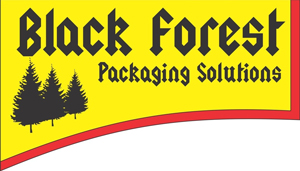Preventative maintenance is a proactive approach to servicing work equipment to make necessary repairs before they become large and costly complications. A professional technician performs it on a regular basis.
According to experts, when it comes to critical industrial work equipment such as packaging machines, it is usually minor issues that grow into major and disruptive complications if left unchecked. Bolts that have loosened over time due to constant machine vibration, and wear and tear of machine moving parts such as chains, bearings, gears, and much more are examples. So, what are the best practices for performing routine preventative maintenance on packing machine for food products?
Create a Preventative Maintenance Program
A program like this includes a set of guidelines, tools, and processes for systematically and regularly performing routine servicing on food packaging machines in order to keep them in good working order. Such precise guidelines prevent unheard-of machine failures, which result in costly downtime.
A well-designed preventative maintenance program for all packaging equipment, including the packing wrapping machine, provides technicians with a clear roadmap that keeps them from reacting to maintenance issues. A program like this defines overall goals, assigns individual responsibilities, identifies the necessary resources, and provides fixed timelines for scheduled maintenance.
Know your Machines and Train your Operators
Effective food packaging machine maintenance necessitates a thorough understanding of all the equipment in use. Anyone working on a machine must read the manual to learn about the machine’s typical operations, service intervals, and troubleshooting.
With such a thorough understanding of machine operations, any incoming operators can be thoroughly vetted and given preventative maintenance expectations. Operators are on the front lines of such equipment, interpreting warning signs for malfunctioning machines. As a result, they must be well-trained.
Because initial warning signs are usually subtle and involve noises, an operator is best suited to determine when preventative maintenance is required. Developing a proactive and safer work environment around packaging machine equipment entails training everyone who comes into contact with the machinery.
Strictly Observe Maintenance Intervals
When you work with a high-quality packing machine for a food products provider, you will receive manufacturer recommendations for maintenance intervals, accurate preventative maintenance records, and cost-effective operation. Following such recommendations helps to preserve the machine’s warranty, ensuring that you get the most out of your investment.
Document Maintenace History
All repairs and preventative maintenance must be documented according to professional standards. A complete history of machine operations and maintenance provides a reference point for what maintenance practices have been performed and when they occurred. All maintenance services, as well as runtime information and history, must be documented.
Results of a Well-Managed Preventative Maintenance Program
Vigilance is essential when it comes to food packaging machines in order to maintain high quality standards of end products. Because of their unique features and components, different food packaging equipment, such as packing wrapping machines, have different requirements. As a result, scheduled maintenance downtime is preferable to unplanned downtime.
Technicians must prioritize belt tensions, fuses, bolts, chain wear, sensors, safety switches, cutters, blades, rollers, electrical components, and voltage directed toward food packaging machinery during routine preventative maintenance. After considering all of these factors, the packaging equipment is left cleaner and operating at peak efficiency.
Recap
With the help of this guide, you can create a checklist for your routine maintenance needs for your packing machine for food products. This not only improves the efficiency of packaging equipment but also the safety of all operators. A preventative maintenance program also reduces downtime, lowers operating costs, reduces component failures, improves equipment reliability, prevents unnecessary wear and tear, and ultimately increases machine lifespan.


Recent Comments